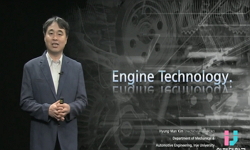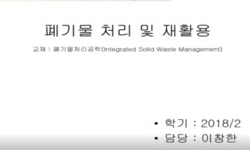연구에서는 잣나무(pinus koraiensis, nut pine)와 갈참나무(quercus aliena, white oak) 그리고 폴리에틸렌(polyethylene,PE)과 폴리메타크릴산메틸(polymethyl methacrylate, PMMA)를 선정하여 ISO 5660-1의 기준에 따라 ...
http://chineseinput.net/에서 pinyin(병음)방식으로 중국어를 변환할 수 있습니다.
변환된 중국어를 복사하여 사용하시면 됩니다.
- 中文 을 입력하시려면 zhongwen을 입력하시고 space를누르시면됩니다.
- 北京 을 입력하시려면 beijing을 입력하시고 space를 누르시면 됩니다.

일부 목재와 플라스틱류의 연소 시 연기 위험성 등급 예측 = Prediction of Smoke Risk Ratings in the Combustion of Some Wood and Plastics
한글로보기https://www.riss.kr/link?id=A107839827
- 저자
- 발행기관
- 학술지명
- 권호사항
-
발행연도
2021
-
작성언어
-
- 주제어
-
KDC
500
-
등재정보
KCI등재
-
자료형태
학술저널
- 발행기관 URL
-
수록면
15-23(9쪽)
-
KCI 피인용횟수
0
- 제공처
-
0
상세조회 -
0
다운로드
부가정보
국문 초록 (Abstract)
연구에서는 잣나무(pinus koraiensis, nut pine)와 갈참나무(quercus aliena, white oak) 그리고 폴리에틸렌(polyethylene,PE)과 폴리메타크릴산메틸(polymethyl methacrylate, PMMA)를 선정하여 ISO 5660-1의 기준에 따라 콘칼로리미터(conecalorimeter)를 이용하여 측정하였다. 측정된 값으로 Chung’s equations 1 (연기성능지수, SPI), Chung’s equations 2 (연기성장지수, SGI)에 의한 연기 위험성을 예측하고자 하였고, 이를 확장하여 화재 시 연기 위험성 평가를 표준화하기 위하여 기준물질(PMMA)을 사용하여 Chung s equations-V (연기성능지수-V, SPI-V와 연기성장지수-V, SGI-V)와 Chung sequation-VI (연기위험성지수-VI, SRI-VI)에 의한 연기 위험성을 등급화하여 평가하였다. SPI-V는 nut pine 0.73으로 가장낮았고, PE가 37.22로 가장 높았다. SGI-V에서도 PE가 0.03으로 가장 적게 나타나 연기가 가장 적게 발생하는 물질이고,nut pine이 10.00으로 가장 높게 나타나 다량의 연기가 발생하는 것으로 예측된다. SRI-VI는 PE (0.00) < PMMA (1.00)< white oak (1.44) << nut pine (13.70)의 순서로 나타났다. 따라서 PE의 연기 위험성이 가장 낮고, nut pine의 연기 위험성이 가장 높은 것으로 판단하였다. 또한 목재의 연소가 플라스틱류보다 불완전한 형태로 이루어짐을 알 수 있었다.
다국어 초록 (Multilingual Abstract)
In this study, pinus koraiensis (nut pine) and quercus aliena (white oak) and polyethylene (PE) and polymethylmethacrylate (PMMA) were selected. And it was measured with a cone calorimeter in accordance with ISO 5660-1. Withthe measured values, it was...
In this study, pinus koraiensis (nut pine) and quercus aliena (white oak) and polyethylene (PE) and polymethylmethacrylate (PMMA) were selected. And it was measured with a cone calorimeter in accordance with ISO 5660-1. Withthe measured values, it was intended to comprehensively predict the risk of smoke by Chung’s equations 1 (smokeperformance index, SPI) and Chung’s equations 2 (smoke growth index, SGI). To standardize fire hazard assessment in caseof fire by extending this, standard materials (PMMA) were used to classify the smoke risk by the Chung s equations-V(smoke performance index-V, SPI-V and smoke growth index-V, SGI-V) and Chung s equation-VI (smoke risk index-VI,SRI-VI) to evaluate it. The SPI-V was the lowest with nut pine of 0.73 and the highest PE was the highest with 37.22. In the SGI-V, PE was the material that produced the least smoke with the least amount of 0.03. Nut pine is expected togenerate a large amount of smoke with the highest at 10.00. SRI-VI, it appeared in the order of PE (0.00) < PMMA (1.00)< white oak (1.44) << nut pine (13.70). Therefore, it was judged that PE had the lowest smoke risk and nut pine had thehighest. In addition, it was found that the combustion of wood was done in an incomplete form than that of plastics.
목차 (Table of Contents)
- 1. 서 론 2. 실험 및 방법 3. 결과 및 고찰 4. 결 론 References
- 1. 서 론 2. 실험 및 방법 3. 결과 및 고찰 4. 결 론 References
참고문헌 (Reference)
1 정영진, "화재로부터 연소성 물질에 대한 연기위험성 및 연기위험성 등급 평가" 한국공업화학회 32 (32): 197-204, 2021
2 유지선, "플라스틱류의 화재 위험성 등급 평가" 한국화재소방학회 35 (35): 9-15, 2021
3 정영진, "붕소 화합물로 처리된 편백목재의 연소시험에 의한 연기발생" 한국공업화학회 29 (29): 670-676, 2018
4 W. T. Simpso, "Wood Handbook-wood as an Engineering Material" Forest Product Laboratory U.S.D.A 1-21, 1987
5 R. H. White, "Wood Handbook" Forest Product Laboratory U.S.D.A 1999
6 J. Bourgois, "Thermal treatment of wood: Analysis of the obtained product" 23 : 303-310, 1989
7 M. Sabet, "Thermal stability and flame-retardant characteristic of irradiated LDPE and composites" 43 (43): 1-8, 2020
8 D. A. Purser, "The SFPE Handbook of Fire Protection Engineering" National Fire Protection Association 83-171, 2002
9 T. S. Kim, "The Guide of Fire Investigation" Kimoondang 77-98, 2009
10 R. Font, "Semivolatile and volatile compounds in combustion of polyethylene" 57 : 615-627, 2004
1 정영진, "화재로부터 연소성 물질에 대한 연기위험성 및 연기위험성 등급 평가" 한국공업화학회 32 (32): 197-204, 2021
2 유지선, "플라스틱류의 화재 위험성 등급 평가" 한국화재소방학회 35 (35): 9-15, 2021
3 정영진, "붕소 화합물로 처리된 편백목재의 연소시험에 의한 연기발생" 한국공업화학회 29 (29): 670-676, 2018
4 W. T. Simpso, "Wood Handbook-wood as an Engineering Material" Forest Product Laboratory U.S.D.A 1-21, 1987
5 R. H. White, "Wood Handbook" Forest Product Laboratory U.S.D.A 1999
6 J. Bourgois, "Thermal treatment of wood: Analysis of the obtained product" 23 : 303-310, 1989
7 M. Sabet, "Thermal stability and flame-retardant characteristic of irradiated LDPE and composites" 43 (43): 1-8, 2020
8 D. A. Purser, "The SFPE Handbook of Fire Protection Engineering" National Fire Protection Association 83-171, 2002
9 T. S. Kim, "The Guide of Fire Investigation" Kimoondang 77-98, 2009
10 R. Font, "Semivolatile and volatile compounds in combustion of polyethylene" 57 : 615-627, 2004
11 J. Greener, "Roll-to-roll manufacturing: Process elements and recent advances" John Wiley & Sons, Inc 2018
12 C. Wrobel, "Review of potential air emissions from burning polyethylene plastic sheeting with piled forest debris" USDA Forest Service, Pacific Northwest Research Station 2003
13 L. Tsantaridis, "Reaction to fire performance of wood and other building products" KTH- Royal Institute of Technology 2003
14 L. Yimin, "Preliminary burning tests on PVC fires with water mist" 24 (24): 583-587, 2005
15 M. J. Spearpoint, "Predicting the piloted ignition of wood in the cone calorimeter using an integral model - effect of species, grain orientation and heat flux" 36 (36): 391-415, 2001
16 M. J. Sprearpoint, "Predicting the burning of wood using an integral model" 123 : 308-324, 2000
17 The National Technical Information Service (NTIS), "Polymer Flammability"
18 W. W. Focke, "Polyethylene flame retarded with expandable graphite and a novel intumescent additive" 131 (131): 1-8, 2014
19 "ISO 5660-1: Reaction-to-fire tests - Heat release, smoke production and mass loss rate - Part 1: Heat release rate (cone calorimeter method) and smoke production rate (dynamic measurement)"
20 H. C. Tran, "Heat Release in Fires" Elsevier Applied Science 357-372, 1992
21 Y. H. Hui, "Handbook of food science, technology, and engineering" CRC press 2006
22 W. P. Sung, "Frontiers of Energy and Environmental Engineering" CRC press 2012
23 R. Alén, "Formation of the main degradation compound groups from wood and its components during pyrolysis" 36 : 137-148, 1996
24 O. Grexa, "Flammability parameters of wood tested on a cone calorimeter" 74 (74): 427-432, 2001
25 H. Vahabi, "Flame Retardancy Index for Thermoplastic Composites" 11 (11): 1-10, 2019
26 T. Zhang, "Experimental Study of Fire Hazards of Thermal-Insulation Material in Diesel Locomotive: Aluminum-Polyurethane" 9 (9): 1-17, 2016
27 D. Tsatsoulas, "Disaster Management and Human Health Risk" WIP Press 181-194, 2009
28 OHSA, "Carbon Monoxide"
29 D. Marquis, "Accuracy (Trueness and Precision) of Conecalorimeter Tests with and without a Vitiated Air Enclosure" 62 : 103-119, 2013
30 R. Sonnier, "A method to study the two-step decomposition of binary blends in cone calorimeter" 169 : 1-10, 2016
31 Y. Tian, "A Study of Charring Behavior of Woods Based on Internal Temperature and CT-Scan Measurements" Western Reserve University 2019
동일학술지(권/호) 다른 논문
-
소방공무원과 응급구조학과 재학생들의기초의학 교과목에 대한 요구도 비교 분석
- 한국화재소방학회
- 이상구(Sang Goo Lee)
- 2021
- KCI등재
-
UL 268 목재 화원을 이용한 실화재실험 및화재시뮬레이션 비교 연구
- 한국화재소방학회
- 이가현(Ga-Hyeon Lee)
- 2021
- KCI등재
-
국내 연구논문의 키워드 네트워크 분석을 통한 수소충전소 연구개발 동향
- 한국화재소방학회
- 임옥근(Ohk Kun Lim)
- 2021
- KCI등재
-
화재 조건의 액체풀 표면 위 액적 충돌 현상에 대한 실험적 연구
- 한국화재소방학회
- 양지현(Ji Hyun Yang)
- 2021
- KCI등재
분석정보
인용정보 인용지수 설명보기
학술지 이력
| 연월일 | 이력구분 | 이력상세 | 등재구분 |
|---|---|---|---|
| 2026 | 평가예정 | 재인증평가 신청대상 (재인증) | |
| 2020-01-01 | 평가 | 등재학술지 유지 (재인증) |  |
| 2017-01-01 | 평가 | 등재학술지 유지 (계속평가) |  |
| 2013-09-03 | 학술지명변경 | 외국어명 : JOURNAL OF KOREAN INSTITUTE OF FIRE SCIENCE & ENGINEERING -> Fire Science and Engineering |  |
| 2013-01-01 | 평가 | 등재 1차 FAIL (등재유지) |  |
| 2010-01-01 | 평가 | 등재학술지 유지 (등재유지) |  |
| 2008-10-10 | 학술지명변경 | 한글명 : 화재.소방학회지 -> 한국화재소방학회 논문지 |  |
| 2008-01-01 | 평가 | 등재 1차 FAIL (등재유지) |  |
| 2007-07-02 | 학술지명변경 | 외국어명 : TRANSACTION OF KOREAN INSTITUTE OF FIRE SCIENCE & ENGINEERING -> JOURNAL OF KOREAN INSTITUTE OF FIRE SCIENCE & ENGINEERING |  |
| 2005-01-01 | 평가 | 등재학술지 선정 (등재후보2차) |  |
| 2004-01-01 | 평가 | 등재후보 1차 PASS (등재후보1차) |  |
| 2002-07-01 | 평가 | 등재후보학술지 선정 (신규평가) |  |
학술지 인용정보
| 기준연도 | WOS-KCI 통합IF(2년) | KCIF(2년) | KCIF(3년) |
|---|---|---|---|
| 2016 | 0.45 | 0.45 | 0.46 |
| KCIF(4년) | KCIF(5년) | 중심성지수(3년) | 즉시성지수 |
| 0.44 | 0.45 | 0.613 | 0.18 |





 스콜라
스콜라




